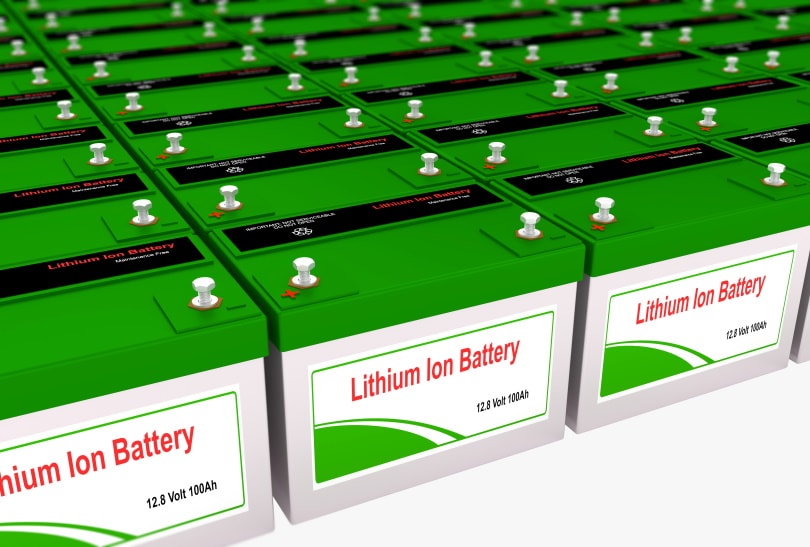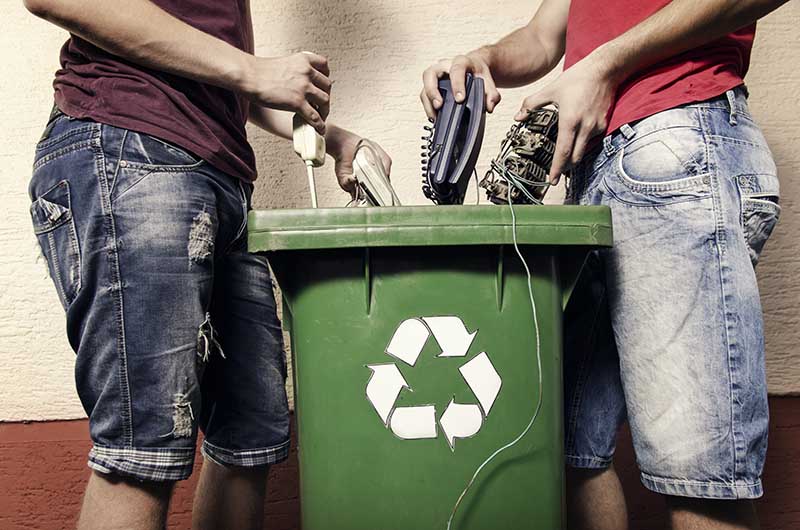Are Lithium Batteries Recyclable? How Do You Properly Dispose of Them?
-
Codee Chessher
- Last updated:

Much of our life is powered by lithium or rechargeable lithium-ion batteries, but not many people know what to do with the batteries when they’re damaged, faulty, or depleted.
With recycling becoming more widespread, we’re led to wonder if you can recycle lithium batteries. You can! Lithium batteries are recyclable, but you can’t just chuck them in with your glass bottles and aluminum cans.
Let’s delve into how to dispose of lithium batteries, why recycling batteries is important, and more relevant info on the matter.
How to Properly Dispose of Lithium Batteries
Lithium batteries are typically recyclable, but you’ll need to take some special steps to identify and package your batteries. Let’s check out the proper steps for disposing of damaged or unwanted lithium batteries below.
1. Identify Lithium Batteries

You can spot a lithium battery by the chasing arrow symbol with “Li-po” or “Li-ion,” or by checking the battery’s instruction manual, documentation, or other labels. Visually inspect the battery and ensure it’s not swollen, punctured, or leaking.
2. Safely Package Batteries for Transport and Disposal
Wrap old, damaged, or worn-out batteries in electrical tape, then put them together in a bag. Individual bags will work for single batteries, too. You want to keep the terminals from touching and potentially starting a fire.
3. Locate a Household Hazardous Waste Collection Center

This is the tricky part. Lithium batteries aren’t typically handled by the recycling plants that your recycling bin sends stuff to. If you accidentally send a battery to a municipal recovery center, it could get crushed in machinery and become a serious fire hazard. Instead, you have to look for a household hazardous waste collection center, which is equipped to safely handle lithium and lithium-ion batteries.
Why Is Recycling Lithium Batteries Important?
Recycling batteries primarily helps the environment by conserving natural resources. Like other ores, lithium only exists in a limited quantity throughout the Earth. When we mine all the lithium, we can’t make more lithium batteries. Scientists are exploring future alternatives, but for now, it’s up to us to conserve our natural resources.
Because most lithium battery is recyclable, it’s essential that we recycle as many as possible. When you send a battery to a recycling plant, they separate the lithium from the battery casing and turn it into a powder. The lithium powder is then used to make new batteries.
Conserving finite resources isn’t the only way recycling lithium batteries helps the environment. Lithium mining and processing in countries like Chile (with the world’s richest lithium deposits) and various African countries is very bad for the environment. It contaminates the groundwater and makes it unsafe to drink for local populations, plus pollutes the soil nearby. All in all, the lithium industry is devastating.
You also help reduce fire hazards by sending lithium batteries to facilities that recognize their danger. If put in the trash, they could get crushed and start a fire. Lastly, you also reduce greenhouse gas emissions that contribute to manmade climate change.
How to Tell Your Lithium Battery Should Be Replaced
They’re not always obvious, but there are some signs that your lithium batteries are at the end of their lifespan or damaged. By spotting these early, you can prevent potential fire hazards and damage to your devices. Let’s take a look at those signs in a handy list below.
- The voltage of the battery has dropped, even when you recharge it. You can check a battery’s voltage with a multimeter—compare it to a fresh battery.
- The battery’s capacity has noticeably dropped. Capacity can also be checked with a multimeter.
- The battery discharges quickly, sometimes even when not in use.
- Your battery has swollen or bloated, perhaps damaging plastic battery compartments.
- The battery is punctured or visibly damaged around the terminals.
Conclusion
Lithium and lithium-ion batteries are the backbones of cell phones and other portable electronic technology, but they come from a finite natural resource. By recycling batteries when they’re not useful anymore, you can help conserve lithium deposits and reduce pollution by limiting demand for new lithium batteries.
Featured Image Credit: William E. Fehr, Shutterstock
Contents
